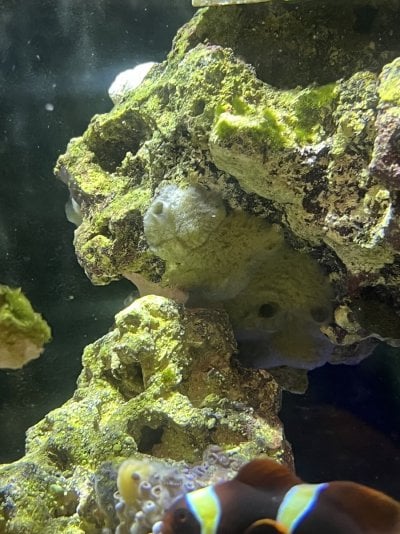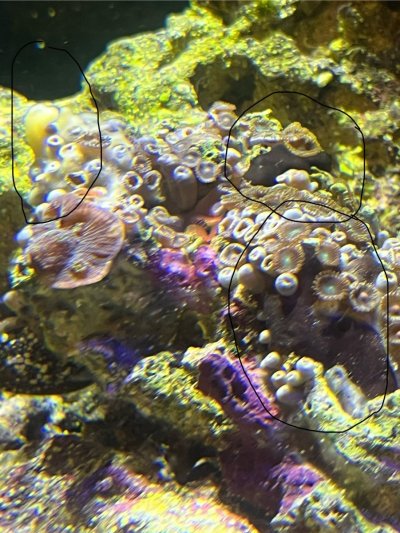Curious if anyone has seen these sponges before. The large grayish white sponge is the same color as a pineapple sponge but much larger at 6” x 3” underside of rock. I acquired this rock from lfs. I saw what I thought was grey putty on the underside of rock and turned out to be this sponge. The second photo shows the two other sponges - one is orange and has a growth that sprouts up and dangles in the current. The third sponge was a purple color but now that it is in higher light I presume it has turned black but still alive. The large and black sponge have been in my 2 year old system for a year w no problems but just moved to this 2 month old system last month.





















